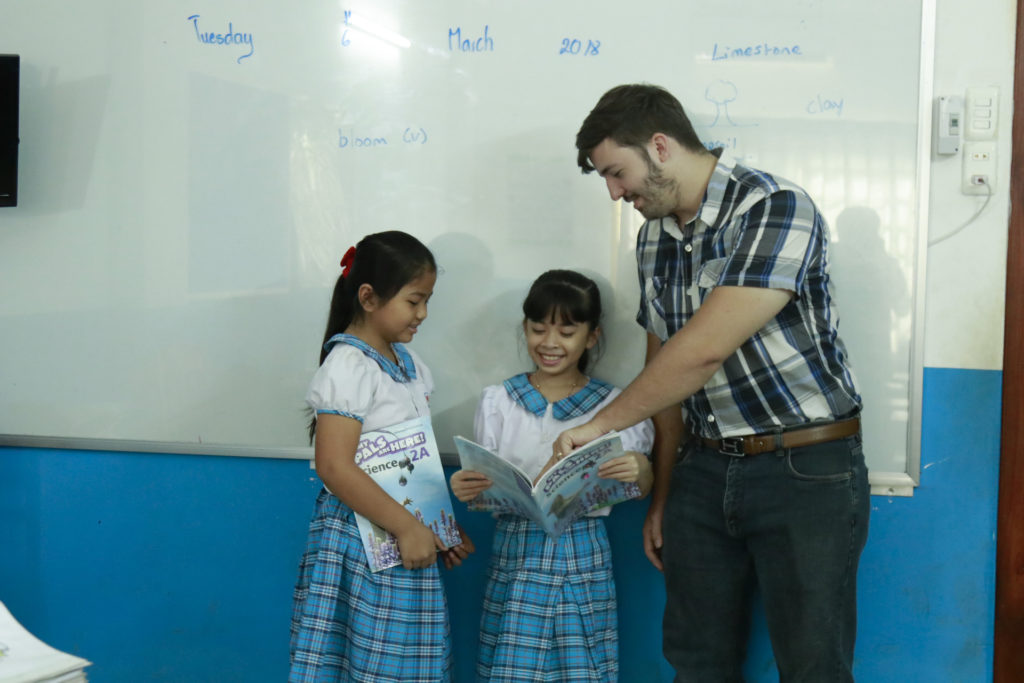
Australian-American Integrated Curriculum
Our International Program is Australian-American Integrated Curriculum
a combination of Australian-American Curriculum that is taught K12 and primarily in English. Our program consists of courses similar to what would be taught in Australian / American schools.
Importance of Language
Language is the principal means of human communication. Through it ideas and information are expressed and communicated, aspirations, attitudes and emotions are articulated, and imaginative possibilities are predicated. Language in the curriculum comprises both Khmer and English, though English is the principal medium of instruction. At the heart of the curriculum is a communicative, task-based approach to language learning, in which the child learns to use the English language as an effective means of communication. Topics are based on the children’s own interests, concerns, and needs, and children are encouraged to speak the language in real contexts and situations. The emphasis is on enjoyment and on using the language in activities such as games, tasks, conversations, role-playing, sketches, and drama. The language the children use in these activities is relevant and reusable from lesson to lesson.
Teachers are encouraged to use a variety of approaches and strategies to promote active and independent language learning. Children’s contact time with the language is maximized through co-operation and sharing in pair and group work, and the child’s appreciation and enjoyment is enhanced through songs, poems, rhymes, stories, riddles, and tongue-twisters.
In each lesson there is an element of language learning, through which the children acquire the vocabulary and language functions that they will need to perform a task or to play a language game. This language input is used immediately, in the same lesson, to perform the task or to play the game. In this way the child is encouraged to use English for relevant communicative purposes.
Using English
Children are given as much freedom as possible in their efforts to use the English language and this also involves an acceptance of the concept that inaccuracies in the language the child uses when trying to communicate are an integral part of language learning. The lesson often includes a period of reflection, which will give the opportunity for simple language awareness exercises.
In schools where English is the medium of instruction, it is important also that children see English used as a natural means of communication in the daily life of the class and the school. This is accomplished through the regular use of English as an informal means of communication. Above all, whether in informal contexts or during the language lesson, the fostering of the child’s enthusiasm for and enjoyment in using the language is a central goal of the curriculum.
Curriculum Areas: The English curriculum envisages language learning as an integrated process in which the three forms, oral language, reading, and writing, are inseparable. It also sees language as a central influence in the learning process. Children learn language, but they also learn through language.






